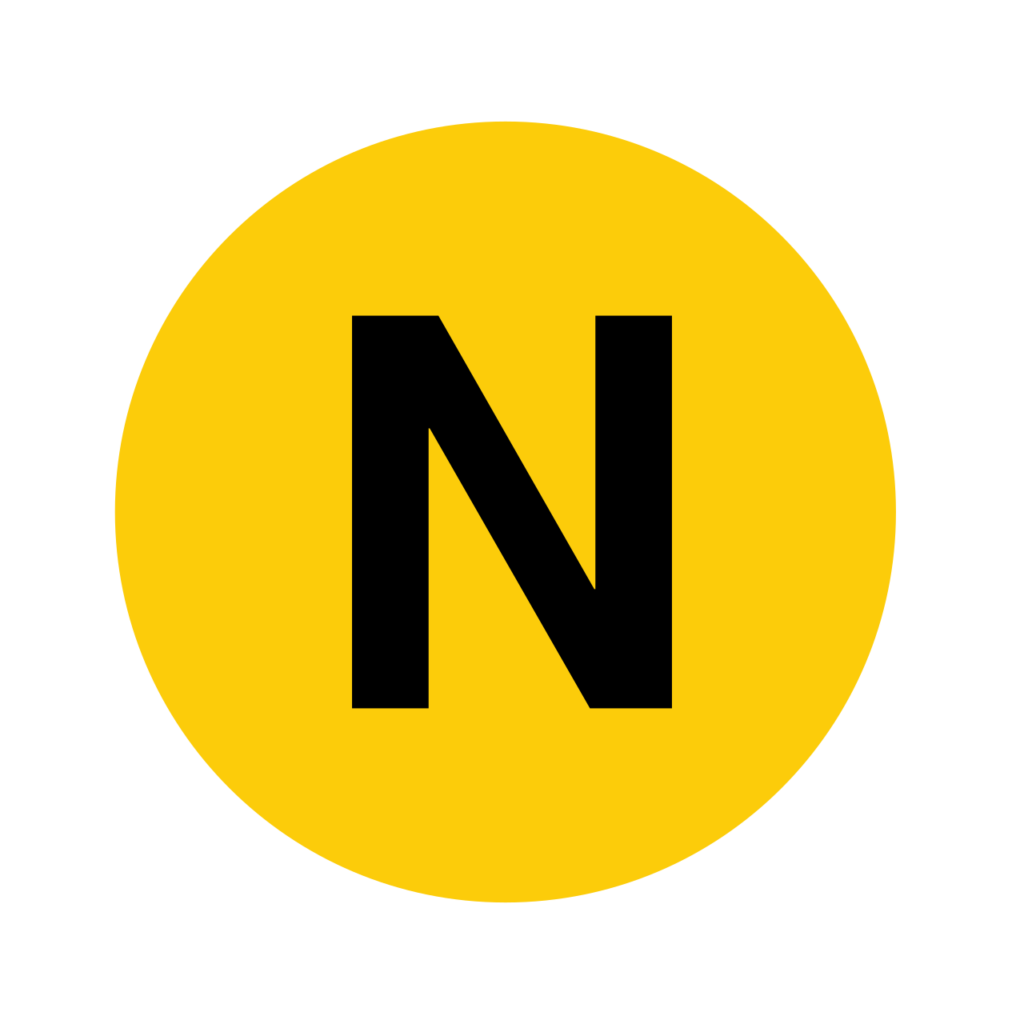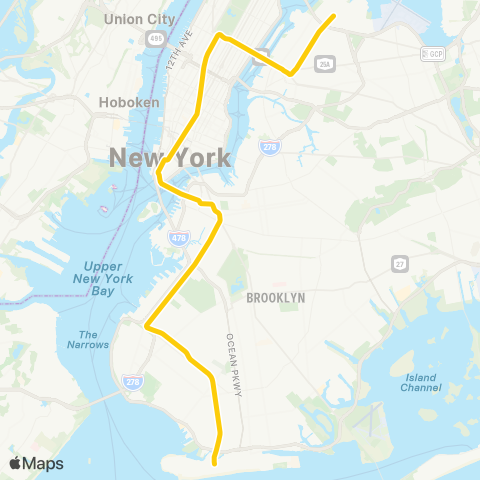
N Line – Yellow Line
Home » Subway Lines » N Line – Yellow Line
The N Line of the New York City subway is an essential route connecting Manhattan, Brooklyn, and Queens with reliable and efficient service. Inaugurated in 1915 as part of the former Brooklyn–Manhattan Transit Corporation (BMT) and now part of the Metropolitan Transportation Authority (MTA) system, the N Line has evolved to become a vital link for passengers traveling between residential, commercial, and cultural neighborhoods in these three boroughs.
Identified by its yellow color on the subway map, the N Line primarily operates as an express line, providing speed along its route. Among its most notable stations are Astoria–Ditmars Boulevard, its terminal in Queens; Times Square–42nd Street, a key point in Manhattan with access to multiple lines; and Coney Island–Stillwell Avenue, in Brooklyn, a crucial station for those traveling to the famous coastal area of Coney Island.
The N Line also offers strategic connections with other subway routes, such as the R, W, D, and Q Lines, allowing efficient access to various points in the city. With its express service and expanded coverage, the N Line is an indispensable option for New Yorkers and visitors looking to move quickly and effectively between Manhattan, Brooklyn, and Queens.
N Line Map and Route
The N Line of the New York City subway connects Manhattan, Brooklyn, and Queens, offering reliable service that facilitates access to historic neighborhoods, commercial areas, and key destinations in these three boroughs. From its terminal at Astoria–Ditmars Boulevard in Queens to its terminal at Coney Island–Stillwell Avenue in Brooklyn, the N Line is an essential option for those looking to move quickly and comfortably throughout the city.
Consult the map to explore all major stations and their connections with other subway lines and transportation methods. Among the most prominent stops are 34th Street–Herald Square, located in midtown Manhattan with key connections; Atlantic Avenue–Barclays Center in Brooklyn, a major transfer point with LIRR; and Coney Island–Stillwell Avenue, ideal for those looking to enjoy the beach and amusement park at Coney Island.

With a combination of local and express services, the N Line is a strategic option for those wishing to move efficiently between Manhattan, Brooklyn, and Queens, ensuring agile and accessible travel in these vibrant boroughs.
N Line Stations and Points of Interest
The N Line of the New York City subway is an essential route for those looking to move quickly and efficiently between Manhattan, Brooklyn, and Queens. Similar to the Q Line, the N Line offers express service, facilitating access to vibrant neighborhoods and key points in the city.
The main stations on the N Line include:
- Astoria–Ditmars Boulevard
- 36th Avenue
- Queensboro Plaza
- Lexington Avenue–59th Street
- Times Square–42nd Street
- 34th Street–Herald Square
- 14th Street–Union Square
- Canal Street
- Atlantic Avenue–Barclays Center
- 59th Street
- Bay Parkway
- Coney Island–Stillwell Avenue
With connections to lines such as R, W, D, and Q, the N Line ensures efficient and well-connected travel, allowing access to key destinations in Manhattan, Brooklyn, and Queens. Thanks to its express service, it is an ideal option for those who need to travel quickly between these boroughs.
Connections and Transfers
The N Line of the New York City subway also offers a series of strategic connections with other lines and transportation methods, facilitating quick and efficient access to various key areas in Manhattan, Brooklyn, and Queens. Below are some of the main connections and transfers available on the N Line:
- Queensboro Plaza: Connection with the 7 Line, allowing direct access to Long Island City and Flushing.
- Lexington Avenue–59th Street: Connection with the 4, 5, and 6 Lines, facilitating access to the Upper East Side and the Bronx.
- Times Square–42nd Street: Connection with multiple lines, including the 1, 2, 3, 7, A, C, and E, as well as service from the Port Authority Bus Terminal.
- Atlantic Avenue–Barclays Center: Connection with the 2, 3, 4, 5, B, D, Q, and R Lines, as well as LIRR service.
- Coney Island–Stillwell Avenue: Connection with the D, F, and Q Lines, as well as buses to other areas of Brooklyn.
With these connections, the N Line not only facilitates transportation between Manhattan and Brooklyn but also becomes a strategic option for quick and well-connected travel throughout the city.
N Line Service and Schedule
The N Line of the New York City subway is an essential route connecting Manhattan, Brooklyn, and Queens, identified by its yellow color on the system map. Like the Q Line, it plays a key role in providing access to residential, commercial, and cultural neighborhoods in these three boroughs.
The N Line operates with express service on specific sections of its route, making it a fast option for those looking to travel efficiently. Its route begins at Astoria–Ditmars Boulevard in Queens and continues through midtown Manhattan and Brooklyn, to Coney Island–Stillwell Avenue.
N Line trains operate every day, generally from early morning until midnight, providing flexibility for passengers traveling during the day or night. For updated information on schedules, wait times, and possible service disruptions, it is recommended to use apps like MTA TrainTime or consult the official MTA website.
Tips for Traveling on the N Line
Check Announcements and Apps: Use tools like MTA TrainTime or Google Maps to check real-time schedules and possible disruptions.
Avoid Peak Hours: Stations like Times Square–42nd Street and Atlantic Avenue–Barclays Center can be more crowded between 7:30-9:30 a.m. and 4:30-6:30 p.m.
Use MetroCard or OMNY: To speed up your subway access.
Optimize Transfers: Take advantage of key connections at Queensboro Plaza and Atlantic Avenue–Barclays Center.
Practice Subway Etiquette: Respect other passengers and let people exit before boarding.
N Line History and Fun Facts
Since its inauguration, the N Line has been a key part of the New York City subway system, connecting some of the city’s most important neighborhoods. Thanks to its express service and strategic connections, it remains one of the preferred options for residents and tourists.

